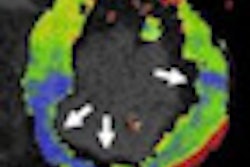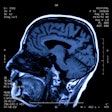With the help of arterial spin labeling (ASL) MRI, researchers at Wake Forest Baptist Medical Center have imaged how mediation helps the brain deal with pain, according to a study published in the April 6 edition of the Journal of Neuroscience.
The group concluded that meditation can reduce pain intensity by as much as 40% and pain unpleasantness by 57%. Meditation was more effective in reducing pain than morphine or other pain-relieving drugs, which typically reduce pain ratings by approximately 25%.
The lead author of the study was Fadel Zeidan, PhD, a postdoctoral research fellow at Wake Forest.
The study enrolled 15 healthy volunteers who had never meditated. The subjects attended four 20-minute classes to learn a meditation technique known as focused attention, in which people are taught to concentrate on breathing and ignore distracting thoughts and emotions.
Before and after meditation training, the brain activity of study participants was imaged using ASL-MRI. During the scans, a pain-inducing heat device was placed on the right leg, heating a small area of skin to 120° F for five minutes.
The scans taken after meditation training showed that every participant's pain rating was reduced, with decreases ranging from 11% to 93%.
At the same time, meditation significantly reduced brain activity in the primary somatosensory cortex, an area involved in creating the feeling of where and how intense a painful stimulus is. The scans taken before meditation training showed very high activity in this area. However, when participants were meditating during the scans, activity in this pain-processing region could not be detected.
Zeidan and colleagues believe that meditation has great potential for clinical use because so little training was required to produce the pain-relieving effects.


.fFmgij6Hin.png?auto=compress%2Cformat&fit=crop&h=100&q=70&w=100)





.fFmgij6Hin.png?auto=compress%2Cformat&fit=crop&h=167&q=70&w=250)










